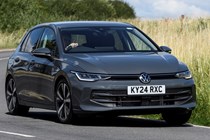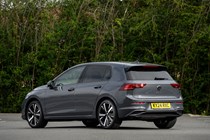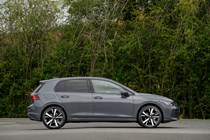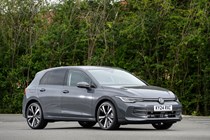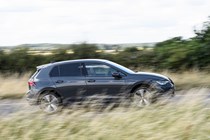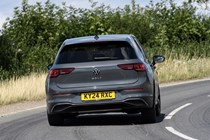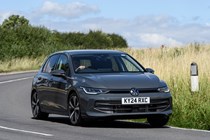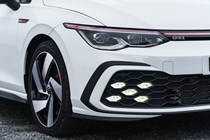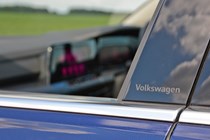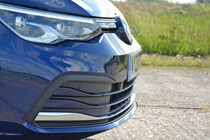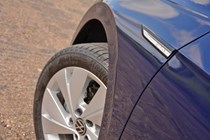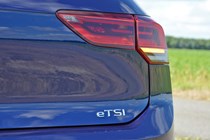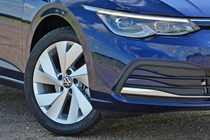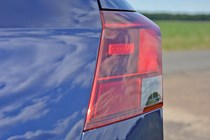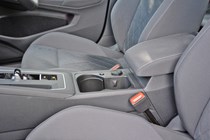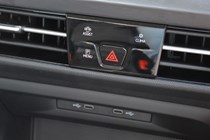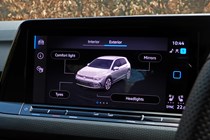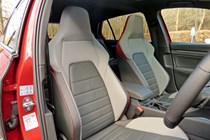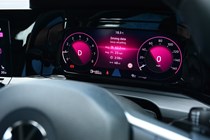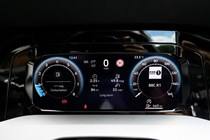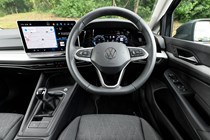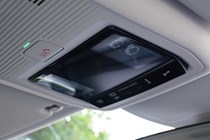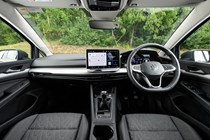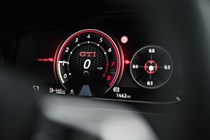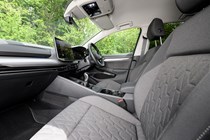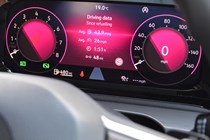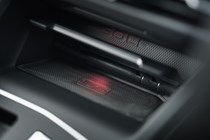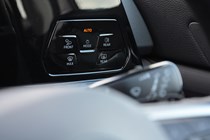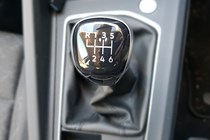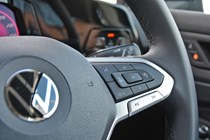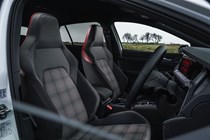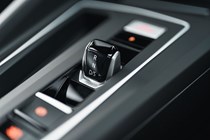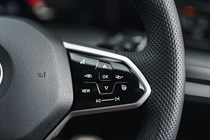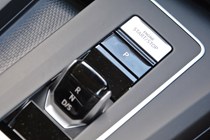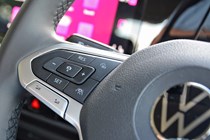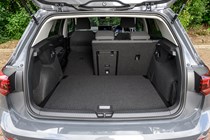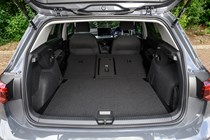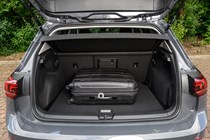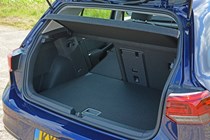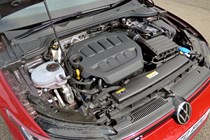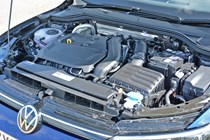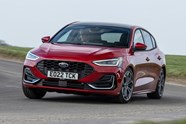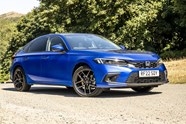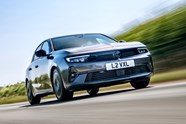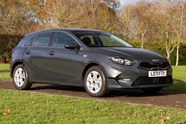
Volkswagen Golf review

At a glance
| Price new | £28,010 - £36,280 |
|---|---|
| Used prices | £10,430 - £30,414 |
| Road tax cost | £195 |
| Insurance group | 14 - 27 |
Get an insurance quote with

|
|
| Fuel economy | 38.2 - 67.3 mpg |
| Miles per pound | 5.6 - 8.6 |
| Number of doors | 5 |
| View full specs for a specific version | |
Available fuel types
Petrol
Diesel
Hybrid
Pros & cons
- New infotainment system is one of the best on sale
- Loads of engines, including new PHEV systems
- Build quality has improved over the old model
- Not as engaging to drive as the Focus
- Revised Skoda Octavia offers better value
- Simpler suspension on entry-level cars
Volkswagen Golf Hatchback rivals
Overview
Despite an industry-wide push towards electric cars and SUVs, the humble Volkswagen Golf hatchback has endured. It’s clinging onto its best-selling status with tenacity. This Mk8 model claimed the number four spot in the UK’s sales charts for the month of June 2024 – and it was the sixth best-selling car for the first half of the same year.
The Golf also celebrates its 50th birthday this year so, to mark the occasion, Volkswagen has treated the latest car to a facelift. The updates aren’t immediately obvious, but the brand reckons it’s made enough tweaks to the Golf’s engines, interior and technology to fix all the foibles that both its customers and us car journalists have whinged about since the car was launched in 2020.
To save you the hassle of playing an infuriating game of spot the difference, we’ll canter through the changes here. There are new LED lights front and rear, a new front bumper and a handful of fresh paint finishes and alloy wheel designs.
Inside, there’s a new, 12.9-inch infotainment system, which is both larger and faster than the old car’s. The old car’s ridiculous haptic steering wheel buttons have also been replaced with traditional push buttons – and Volkswagen says it’s nailed the facelifted Golf together with greater care using better quality materials.
Volkswagen has tweaked the Golf’s engine range, too. The hatchback’s core range of four-cylinder petrol and diesel engines remain, although the outgoing car’s rather breathless 1.0-litre three-cylinder petrol unit has been axed in favour of a new 115hp version of the Group’s 1.5-litre petrol engine.
To offset this, Volkswagen has improved the Golf’s plug-in hybrid powertrains. They’re now based on the Group’s latest 1.5-litre petrol engine rather than its archaic 1.4-litre unit. Plus, Volkswagen has fitted them with much larger 19.7kWh batteries, compared to the 10.6kWh units in the pre-facelifted car.
Thanks to this change, Volkswagen says the 204hp Golf Style eHybrid can now travel 88 miles on electric power alone, while the sporty 272hp GTE model can manage 82 miles. That’s around twice the EV range of the pre-facelift Golf PHEVs. Plus, the more efficient eHybrid system has a claimed WLTP fuel economy figure of 941.6mpg.
You can have your Golf in a range of six specifications. They’re called Life, Match, Style, R-Line, Black Edition and GTE. The Black Edition trim is new for the facelift and, as its name suggests, it features black exterior trim, black mirror caps and black 18-inch alloy wheels. It also gets a little more standard equipment over the R-Line model, with extras such as heated front seats, Matrix LED headlights and scrolling rear indicators.
But has Volkswagen gone far enough with its updates? The opposition has never been stronger – and most manufacturers have consolidated their hatchback efforts into one incredibly capable model. Key rivals include the BMW 1 Series, Ford Focus, Skoda Octavia, Vauxhall Astra and the Parkers award-winning Honda Civic. To shine in this company takes something very special indeed.
Over the next few pages, we’ll thoroughly review all aspects of the Volkswagen Golf and rate them in our verdict. Our scores will consider its driving experience, practicality, interior quality, technology and running costs. If you’d like to learn more about how we reached our verdict on the Golf, check out our page on how we test cars.


